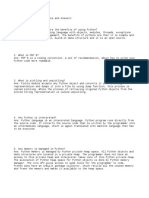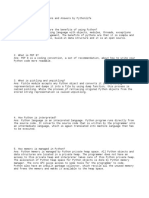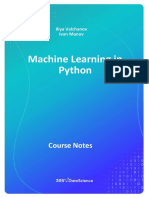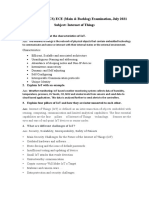0% found this document useful (0 votes)
17 views40 pagesTop 300 Python Interview Q&A
The document is a comprehensive list of the top 300 Python interview questions categorized into various topics such as core fundamentals, control flow, object-oriented programming, and more. Each section contains specific questions along with concise answers covering key concepts and features of Python. Additionally, it includes links to social media for further content and job updates.
Uploaded by
shanurudra177Copyright
© © All Rights Reserved
We take content rights seriously. If you suspect this is your content, claim it here.
Available Formats
Download as PDF, TXT or read online on Scribd
0% found this document useful (0 votes)
17 views40 pagesTop 300 Python Interview Q&A
The document is a comprehensive list of the top 300 Python interview questions categorized into various topics such as core fundamentals, control flow, object-oriented programming, and more. Each section contains specific questions along with concise answers covering key concepts and features of Python. Additionally, it includes links to social media for further content and job updates.
Uploaded by
shanurudra177Copyright
© © All Rights Reserved
We take content rights seriously. If you suspect this is your content, claim it here.
Available Formats
Download as PDF, TXT or read online on Scribd
/ 40































































































